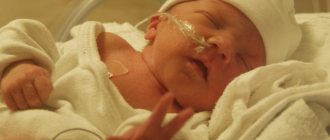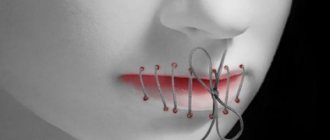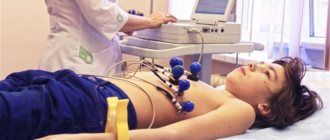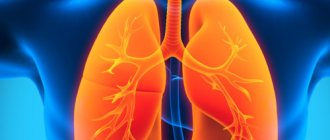Treatment of the consequences of cerebral ischemia in newborns
Moderate and severe encephalopathy often results in permanent brain changes.
They can manifest themselves insignificantly (attention deficit disorder, for example) or lead to disability (cerebral palsy, mental retardation). For any outcome of encephalopathy, the range of medications for treatment is very limited:
- If seizures persist, anticonvulsant therapy is administered
- In severe cerebral palsy with spasticity of the arms or legs, muscle relaxants are used
This is where the list of tablets ends. The only way to influence the development of a child with the consequences of severe ischemia is regular exercise.
- Cerebral palsy requires a special massage, which is best left to specialists. At least in the early stages.
- Physical therapy is necessary for older children
- Special devices for correcting incorrect postures. With spasticity, the baby's limbs often take an inadequate position, which worsens the prognosis in the future. Splints, bolsters, strollers, and special chairs provide a physiological position of the body in space.
- Classes with a speech therapist and home exercises for the development of speech, attention, perseverance
- Communication with children, adults and surrounding wildlife is an important stage in the rehabilitation of children after cerebral ischemia.
This is where the list of tablets ends. The only way to influence the development of a child with the consequences of severe ischemia is regular exercise.
Newborn
If there are signs of intrauterine hypoxia or the fact of asphyxia during childbirth, the presence of cerebral ischemia is not questioned.
But sometimes the clinical picture is not completely clear, or a more detailed examination is required to determine the degree of cerebral depression.
Then additional research methods are used:
- Neurosonography (NSG). The method is quite simple to implement and informative. Detects the presence of structural changes in the substance of the brain, as well as edema and swelling of the brain. It is NOT a leading method as it often produces false results, both positive and negative.
- Dopplerography of cerebral circulation. Detects various cerebral circulation disorders. For example, an increase in blood flow due to dilated arteries, a decrease in its speed in some branches.
- CT, MRI. Detailed visualization of pathological changes.
- EEG. To determine the degree of neuronal damage, identify convulsive readiness of the brain, and select adequate anticonvulsant therapy.
- Analysis of cerebrospinal fluid (CSF) according to indications.
- All laboratory tests: general clinical, biochemical blood parameters, coagulogram, blood electrolytes.
First of all, complaints, medical history and neurological status are always assessed.
1st degree
In this case, there is an implicit appearance of neurological disorders. With grade 1 cerebral ischemia, patients note the appearance of:
- Headaches.
- General weakness, which gradually develops into severe fatigue.
- Decreased concentration.
- Frequent insomnia.
- Memory impairment.
- Emotional instability.
However, these symptoms are not specific. Because of this, it is very difficult to timely diagnose the appearance of grade 1 cerebral ischemia. Many people associate all these symptoms with overwork, so they rarely seek medical help. However, you need to understand that this stage of pathology is amenable to the fastest and most effective treatment.
Consequences of cerebral ischemia in an infant
The consequences of ischemic disease depend on the severity of its development and the presence of any other pathological diseases. When therapy is effective and correctly selected, you can protect yourself from the consequences.
After each treatment, the child will need a long time for rehabilitation, and ischemia is no exception. A lot also depends on rehabilitation.
The main consequences after an infant has suffered coronary artery disease are as follows:
- regular headaches;
- disturbed sleep;
- developmental delay;
- constant nervousness;
- mental neurological disease (epilepsy);
- isolation.
Features of the management of the 1st degree of the disease in newborns
As is the case with adults, very young children also have a blurred clinical picture. However, pediatricians recommend that parents pay attention to several signs.
The first thing that should cause concern is that the baby’s behavior has changed. If the child constantly cries, looks restless and sleeps poorly, even despite obvious signs of drowsiness, then it is likely that this is the first signal of the development of grade 1 cerebral ischemia in the newborn. It is also worth paying attention to muscle tension and excess tendon reflexes.
If we are talking about premature babies, then the last two signs will look different. In this case, tendon reflexes and muscle tone, on the contrary, will be reduced. However, there is no need to worry as this case does not require serious treatment.
In order for the baby to return to normal, a restorative massage is enough. Thanks to this procedure, you can relax the baby's muscles, significantly improve blood flow and ensure the necessary oxygen reaches the brain. It is also important to ensure that there is a sufficient amount of air in the newborn’s room, so it is worth ventilating the room more often. If the pathology cannot be treated, then the disease can develop into the next degree of cerebral ischemia of the newborn. Therefore, it is worth visiting a pediatrician if any strange symptoms appear in your child. If he exhibits behavioral changes that are not typical for very young children, then you should not turn a blind eye to the problem.
Main symptoms, signs and diagnosis of the disease
The motive for an in-depth examination of the structures of the infant’s central nervous system is the appearance of visible symptoms of ischemia. These include the following signs of central nervous system depression:
- prolonged and not typical for age tremors of the limbs and chin;
- hyper-or hypotonicity of muscles;
- sleep disorders, increased excitability, tearfulness;
- the appearance of seizures at intervals of 2-3 hours;
- nervous tics;
- lethargy;
- nystagmus, strabismus;
- poor sucking reflex, frequent and profuse regurgitation in a newborn baby.
Also, during a monthly examination, a specialist should be alert to the rapid growth of head circumference, poor overgrowth of the large fontanel, and a clear delay in the development of the baby.
Hypoxic-ischemic brain damage in newborns is diagnosed in several stages.
If a visiting nurse suspects that a child is developing a pathology, she should first refer him to a pediatrician, who will then give a referral to a pediatric neurologist. He, in turn, must conduct a full-time examination of the child, check reflexes, evaluate the functioning of respiratory and cardiac activity and analyze the neuropsychological health of the newborn.
If, as a result of such an examination, there is a suspicion of ischemia, then in this case, the structures of the central nervous system are examined using available methods for assessing blood flow:
- duplex ultrasound examination of arteries;
- angiography (used to identify pathologies of the cerebral blood supply system due to thrombosis, aneurysms, vasospasm);
- MR angiography and CT angiography.
As a supplement, an ultrasound of the heart, an ECG and an assessment of the child’s blood composition are performed.
Cerebral ischemia grade 2
At the next stage, the disease manifests itself with more pronounced symptoms. First of all, you should pay attention to the appearance of dizziness, serious problems with memory impairment and loss of coordination.
This stage of disease development is characterized by complete loss of ability to work. This is explained by the fact that a lesion appears in the brain tissue. Such a person cannot do physical work. This is explained by the fact that the patient has a serious lack of coordination. Problems also arise in the process of mental activity. In addition, at this stage of pathology, brain damage is diagnosed against the background of the development of pathological reflexes.
Clinical manifestations of cerebral crises
Manifestations depend on the level of vascular damage.
Symptom complexes of crises occur in different ways:
Also read:Transient cerebral ischemia
- repeated headaches in the same area;
- dizziness with impaired balance, a feeling of “rotation of objects”, “shaking of the ground”;
- short-term fainting;
- darkening of the eyes with temporary loss of the visual field;
- sudden loss of consciousness, loss of orientation with rapid recovery;
- attacks of numbness and coldness of the extremities;
- speech disorders;
- “rushes” of blood to the head and redness with pulsation in the temples;
- insomnia and “influx of thoughts” at night;
- short-term pain in the heart, arrhythmias.
Cerebral ischemia degree 2 in newborns: features
In such a situation, it is more difficult to talk about successful treatment. The fact is that at this stage of development of the disease, children experience serious mental and psychological abnormalities. According to statistics, such failures occur in 20% of cases.
If we talk about symptoms, then it is worth paying attention to how the child sleeps. If he is restless and does not fall asleep for a long time, this indicates possible intracranial pressure. It is also recommended to pay attention to the appearance of:
- Muscle weakness.
- Weakening of the sucking and grasping reflex.
- Pallor of the skin.
In some situations, bluish or reddish “patterns” may appear on the baby’s face and body.
Among the consequences of grade 2 cerebral ischemia in newborns, it is worth noting a possible increase in the size of the head due to fluid beginning to accumulate inside the skull.
In this situation, a combination type of treatment is required. First of all, specialists prescribe medications that will help dilate blood vessels. It is necessary to take anticonvulsants and medications that will help reduce blood clotting and also remove excess fluid. If a baby is diagnosed with hydrocephalus (enlarged head) as a consequence of grade 2 cerebral ischemia, surgical intervention may be required. However, operations at this stage of development of the disease are performed extremely rarely.
How to cope, how to treat?
Treatment of cerebral ischemia should be aimed not only at eliminating existing complaints, but also at preventing further progression of the disease with the development of severe or acute forms.
Before prescribing certain medications, it is necessary, if possible, to eliminate existing risk factors and normalize the patient’s diet and lifestyle. It is important to explain to the patient about the dangers of smoking, chronic stress and emotional stress, which is possible only in the initial stage of the disease. In a later period, it is necessary to have conversations with his relatives, because it is on their shoulders that the care of the sick person is entrusted. And such people, as a rule, require maximum attention and patience.
In addition to correcting lipid metabolism and blood pressure, it is necessary to prescribe drugs with antioxidant activity. Currently, Actovegin, piracetam, and Cerebrolysin are widely used, which help dilate the blood vessels that supply the brain, thereby improving blood delivery to the nervous tissue. In addition, the well-known vitamins C and E also have an antioxidant effect. Piracetam has antiplatelet properties, improving microcirculation.
In addition to vasodilators and antioxidant drugs, if necessary, anxiolytics and antidepressants are prescribed, for example, Grandaxin, which eliminates feelings of anxiety, fear, and emotional stress.
It is good when complex therapy for cerebral ischemia also includes regular exercise therapy, swimming and massage. In most cases, the patient is advised to completely review their lifestyle and diet.
It is important to remember that timely treatment prescribed by a competent specialist helps not only to avoid aggravation of the most seemingly insignificant changes in brain activity, but also such dangerous manifestations of cerebral circulation disorders as cerebral infarction and vascular dementia.
3rd degree of pathology
At this stage of development of cerebral ischemia, the disease is characterized by more pronounced disturbances in the functioning of the brain centers. If we talk about symptoms, the patient completely loses his ability to work and cannot engage in self-care, and often faints. At the same time, it is much more difficult for the patient to formulate a complaint and describe his condition. However, if a person with similar symptoms comes to a neurologist, the specialist will very quickly make the necessary diagnosis based on external signs.
Why does ischemia develop?
The causes of cerebral ischemia are hidden in damage to the vascular bed in various diseases. Of leading importance are:
- atherosclerosis;
- hypertonic disease;
- arterial hypotension;
- vasculitis (inflammation of blood vessels) due to infections and allergic reactions;
- thrombosis and embolism;
- head injuries with brain damage;
- congenital aneurysms and malformations;
- blood diseases accompanied by increased clotting;
- symptomatic renal hypertension;
- endocrine diseases.
One of the significant components is the lack of compensation from collaterals.
Features of manifestation
Grade 3 cerebral ischemia is considered very dangerous for young children. In this case, serious damage to important brain functions occurs. Most often, fairly obvious symptoms are observed. The child stops responding to external stimuli. In some situations, babies cannot breathe or eat on their own. Parents also pay attention to the appearance of involuntary seizures and a sharp increase in intracranial pressure. In most cases, hydrocephalic syndrome develops.
If emergency medical care is not provided to the baby during this period of time, then in the absence of treatment the baby has practically no chance of survival.
To alleviate the child’s condition, he must be connected to an artificial respiration apparatus. In addition, blood clots are removed surgically. It is necessary to install a shunt and remove the cerebrospinal fluid that has accumulated in the brain. Vasodilator diuretic therapy is also prescribed. However, even in this case there is no guarantee that the child will be able to function normally.
The consequences of cerebral ischemia in newborns are very serious. More than 80% of surviving patients are diagnosed with autism or cerebral palsy. Minor psychological abnormalities may occur.
Diagnostics
A preliminary diagnosis is made by a neonatologist already in the first days of a newborn’s life. Typical changes in muscle tone and tendon reflexes allow one to suspect perinatal damage to the nervous system and suggest the degree of its severity. Subsequently, the child is examined by a neurologist - in a maternity hospital, clinic or specialized department. A baby with an established diagnosis will be under the supervision of a doctor for a long time, even after discharge from the hospital.
The following methods help to recognize pathology in a newborn.
- Neurosonography
Ultrasound of the brain does not allow an accurate diagnosis. This diagnostic method is auxiliary and is used to find the cause of ischemia. When performing an ultrasound, the doctor may detect swelling, areas of hemorrhage, or other changes in the brain. In some cases, no specific pathology is detected during the study.
- Electroencephalography
EEG is performed for cerebral ischemia of II and III degrees. The method allows you to assess how badly the brain is damaged, as well as identify foci of seizure activity. After an EEG, the child may be prescribed specific anticonvulsant therapy.
- Magnetic resonance imaging
MRI of the brain allows you to detect areas of hemorrhage and other pathological processes not visible with ultrasound. The method is used according to strict indications for moderate and severe forms of ischemia.
General symptoms
If we talk about the main manifestations, then first of all it is worth highlighting that the patient’s pain syndrome is observed to a greater extent in the morning or at night. In this case, the discomfort increases in a horizontal position. This pathology is also characterized by severe vomiting, which cannot be controlled with standard medications.
Some patients note the appearance of persistent bruises, vision problems and disturbances in the functioning of the autonomic nervous system. Patients suffer from hallucinations and decreased sexual desire.
What changes occur during chronic ischemia?
It is known that nervous tissue is highly specialized and complexly organized structurally and functionally, therefore it is extremely sensitive to even a slight lack of oxygen. Under the influence of various factors that disrupt cerebral blood flow, hypoxia occurs in the brain, complex metabolic processes are disrupted, lipid peroxidation is activated with the formation of free radicals that have a toxic effect on nerve cells (neurons). As a result of damage to neurons, their degeneration and death can occur, microscopic foci of necrosis and demyelination (loss of nerve membranes by nerve processes) appear, as a result of which the brain becomes like a sponge - the so-called spongiosis.
As degenerative changes progress, the perivascular spaces expand, and gliosis occurs - the proliferation of glial cells (a kind of framework of neurons that performs a supporting and trophic function). Gliosis is similar to sclerosis in other organs, which also accompanies chronic hypoxia. Such changes are, as a rule, diffuse in nature, but their severity can vary in different parts of the central nervous system.
Periventricular ischemia can be considered a unique marker of chronic cerebral circulatory disorders, in which rarefaction of the nervous tissue around the ventricles of the brain occurs, as well as in the subcortical sections of the white matter with the phenomena of demyelination, gliosis and expansion of the perivascular (perivascular) spaces (leukoaraiosis).
Common symptoms in young children
If cerebral ischemia affects a newborn baby, then in the first stages the signs of the disease will not be expressed. This is explained by the fact that before the age of one year, the baby’s bones do not completely fuse. This leads to the fact that the skull changes its size, gradually grows and adapts to changes in pressure. However, there are some symptoms that should cause concern for parents. If a child constantly cries shrilly, spits up like a fountain, or has a sharp protrusion of the fontanel and convulsions, then this is a reason to contact a specialist. It is also worth paying attention to the baby’s behavior. If his mood changes very quickly (he can be in an excited state and a second later becomes lethargic), then this is also a serious symptom.
With the development of cerebral ischemia, some children experience eye movement disorders, problems with knowledge, and dehiscence of sutures in the skull. If parents do not take any action to treat the baby, then the minimal consequence of delayed treatment will be the development of oligophrenia. Therefore, it is important to diagnose the disease in a timely manner.
Symptoms of disease development
Clinical manifestations in mild cases may include general restlessness, frequent spontaneous movements of the legs and arms, shallow sleep with frequent crying, trembling chin, and difficulty breastfeeding (the baby quickly weakens). As a rule, these deviations disappear within a month.
With the second degree of ischemia, the following signs are added to the listed signs:
- convulsive syndrome;
- low pressure in arterial vessels;
- pulsation and protrusion of the fontanel due to intracranial hypertension;
- weakness when sucking, regurgitation;
- arrhythmia;
- stopping breathing and jerky screams during sleep;
- cyanosis of the skin or marbled pattern;
- eye movement disorders;
- asymmetry of nasolabial folds.
Severe encephalopathy is accompanied by the absence of basic reflexes (grasping, sucking and swallowing), prolonged attacks of convulsions, followed by stupor.
Depending on the zone of ischemia, there may be cessation of breathing and slowing of heart contractions. Wide pupils and motionless eyes, like those of a doll, occur when the optic nerves are damaged. This condition can result in death. The duration of the severe stage can be up to two months, and with a successful outcome, the child is left with a neurological defect.
During the recovery period after an acute disturbance of cerebral blood flow, the following syndromes occur:
- asthenia – weakness, lethargy, tearfulness, sleep disturbances;
- impaired motor function - changes in muscle tone, excessive movements of the limbs or paralysis;
- convulsions – small-amplitude tremors, spasms of the respiratory muscles, epileptiform seizures;
- autonomic dysfunction - cold extremities with pale or bluish skin, digestive disorders (vomiting, colic), changes in blood pressure and pulse rate.
Benign form
If we are talking about such intracranial hypertension, then in this case no medical intervention is required. However, this is only possible if such a condition does not last for a long time, and the pain syndrome does not become more intense. In this case there is no serious cause for concern. However, if you experience a feeling of fullness and spasms, it is recommended to consult a specialist.
As a rule, to eliminate benign hypertension, it is enough to simply follow a certain diet. To do this, you need to monitor your body weight, eat only healthy foods and maintain normal hormonal levels. You also need to be very careful when using various medications. In some situations, your doctor may prescribe diuretics.
Drug therapy
To eliminate the unpleasant symptoms of intracranial hypertension, specialists first prescribe a diuretic to the patient. These drugs help reduce the level of cerebrospinal fluid in the human body.
If an infectious or inflammatory brain lesion is detected, antiviral drugs and antibiotics may be prescribed. Drugs to improve venous outflow and non-steroidal drugs are also used for symptomatic therapy.
If a person suffers from too much pressure, then in this case the drugs are administered intravenously. In case of serious ailments and deterioration of the patient's condition, hospitalization is necessary. Surgical measures can be carried out even if the doctor has not established an accurate diagnosis. This is because in such situations, every minute of delay is fraught with serious consequences.
Surgical intervention
In some situations, if medications do not work as expected, the patient may require surgery. Typically, a procedure called a lumbar puncture is performed to relieve intracranial pressure.
Operations can be performed urgently or plannedly. If we talk about the first situation, then in this case decompression craniotomy should be performed. This is the only way to quickly reduce blood pressure. During planned surgery, bypass surgery is performed.
However, even with all surgical measures, there is a risk of developing serious consequences of cerebral ischemia. Therefore, it is important to stop the pathology as early as possible.
Types of cerebrovascular insufficiency
Cerebral ischemia occurs:
- as an acute form in the form of strokes and vascular crises;
- becomes chronic.
Chronic insufficiency of cerebral blood supply is promoted by:
- fluctuations in blood pressure with hypertension and hypotension;
- violation of the structure of the vessel wall, reduced elasticity, atherosclerotic plaques;
- weak possibilities of compensatory blood circulation;
- cardiac decompensation;
- disruption of biochemical processes in the body due to endocrine diseases;
- decreased pulmonary ventilation during pneumonia, attacks of bronchial asthma;
- decrease in total blood mass in anemia.
In all diseases, cerebral ischemia is acquired. But newborns may have congenital defects.
Traditional methods of treatment
In addition to drug treatment, additional therapy can be used in the period after surgery. To lower blood pressure, you can prepare a tincture of clover, motherwort, valerian or a decoction of mulberry branches.
Black poplar buds also have good properties. As a rule, herbal treatment lasts 2-3 weeks, after which you must take a break of 21 days and repeat the course of therapy. However, you need to understand that traditional medicine is not a panacea and it is impossible to get rid of such a serious illness with the help of herbs. The use of any such medications is permitted only after consultation with a doctor. In addition, it is worth considering that some people may experience an allergic reaction even to the most natural drugs. Such attacks can only worsen the patient's condition. Therefore, before using herbs, you must make sure that the product you choose is safe.
During exacerbations of attacks of hypertension, it is necessary to spend less time at the computer or TV, monitor your emotional state and get more rest. Stress and poor nutrition can also worsen the patient's condition.
Smoking and alcohol are strictly prohibited for everyone who suffers from this pathology. If we are talking about infants, then you need to carefully monitor the baby’s behavior, since he cannot say what is bothering him. If a child does not sleep well and is constantly in nervous tension, it is necessary to urgently consult a therapist.
Methods in the acute period of ischemia
Since moderate and severe ischemia usually manifests itself immediately and clearly, the Apgar scale can give a preliminary assessment of the condition. If within the first two minutes of life the baby does not begin to breathe on his own or with the help of an oxygen mask, then resuscitation measures begin:
- Intubation and artificial ventilation
With minor injuries, most children can be transferred to spontaneous breathing within 2-3 minutes after intubation. Such babies are handed over to the mother and are under close medical supervision. If longer resuscitation measures are required, the child is transferred to the intensive care unit, where respiratory parameters, blood circulation, blood gas levels, hemoglobin and glucose are actively monitored.
Anticonvulsant drugs (phenobarbital, phenytoin and others) in the correct dosage stop seizures and save the child from additional brain damage.
- Maintaining cardiac activity
Since the heart suffers along with the brain during hypoxia, it is sometimes necessary to maintain its function. Drugs such as dopamine and dobutamine keep the heart rate adequate.
In recent years, studies have been carried out related to a decrease in temperature by 3-4 degrees below normal. There is evidence that such hypothermia can preserve brain cells, preventing the spread of necrosis. It has been introduced into the standard treatment of encephalopathy since 2020. The main rule of hypothermia: specialist supervision and gradual warming.
Thus, there are no drugs yet that can cure hypoxic brain damage. You can only stop them and provide the child with support for all important functions until recovery.












